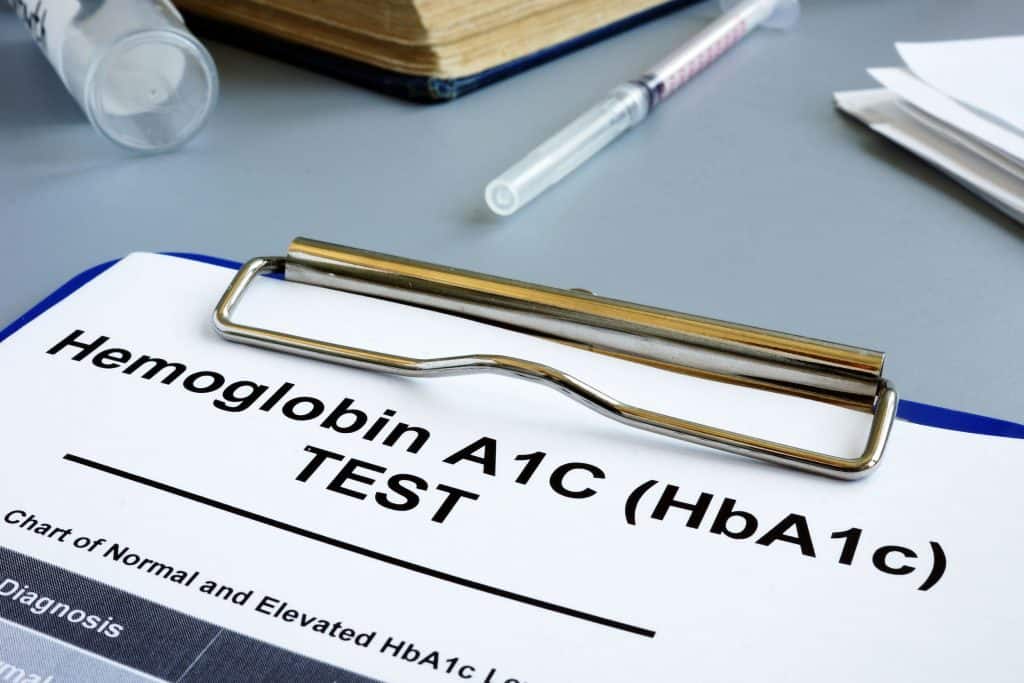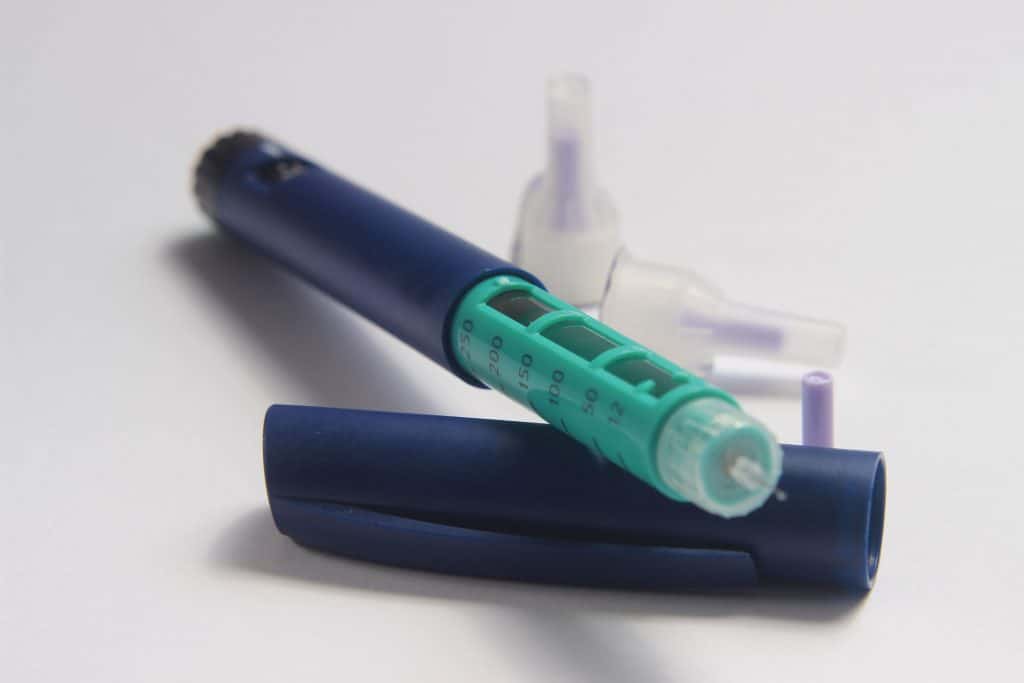When To Test For Diabetes
Posted by Mike Sonneveldt - See Editorial Guidelines (Last Updated On: Mon Feb 12 2024)

Do you know when to test for diabetes? Plenty of support exists, with various resources available to get you back on track and living life to the fullest. Testing for diabetes should never slow you down.
In honor of National Diabetes Awareness Month, we at Prescription Hope have put together a series covering diabetes to help you confidently understand the condition that over 37 million Americans deal with each year. In Part 1 of this series, we covered the stats, the background of the disease, and how to apply for a $60.00 a month through Prescription Hope’s medication access service cost for each medication.
For Part 2 of this series, we are covering how an estimated 37 million Americans with prediabetes and 8 million undiagnosed Americans can navigate getting a diagnosis and take control of their condition. Many of those millions do not get a diagnosis because they fear going to the doctor, ignore the symptoms, or are nervous they do not have the money to pay for their medication.
Diabetes testing empowers you to make the right decisions and continue to live life to the fullest. This guide on when to test for diabetes will help make the process less overwhelming and confusing.

When To Test For Diabetes: Know The Symptoms
Testing for diabetes can be an intimidating task, though it does not need to be. The first step is to recognize the symptoms of diabetes. While the symptoms of Type 1 diabetes often show up in childhood to young adulthood, they may be more subtle for someone with Type 2 diabetes. If you are dealing with some of the following symptoms, it is time to consult a doctor.
Symptoms of diabetes include:
- Increases in thirst
- Exhaustion or feeling tired
- Vision blur
- Weight loss
- Heavy breathing
- Nausea and vomiting
- Irritation
- Increase in hunger
If you deal with these symptoms on a day-to-day basis, then scheduling an appointment with your doctor is the best step you can take. While at the doctor’s, be sure to be clear and upfront about what you are feeling and the symptoms you have been dealing with. Issues like this tell you it is time to test for diabetes.
Along with discussing your symptoms with your doctor, it can help to read various diabetes testing guides to understand what to expect. It helps to learn not just about the A1C test process, but about insulin delivery options, and even how to find affordable diabetes medication.
When To Test For Diabetes: The Testing Process
One of the most common methods of diabetes testing uses the A1C test process. This test occurs in a doctor’s office or a lab with a simple blood sample from your finger or arm. The A1C test measures your average blood sugar level for the past two to three months. It does this by testing the amount of sugar attached to a protein (hemoglobin) in your red blood cells. The percentage of red blood cells with sugar-coated hemoglobin gives you the reading used to determine whether you have diabetes or are prediabetic.
Mayo Clinic reports that a normal percentage is below a 5.7% result on the A1C test. Doctors diagnose prediabetic with test results of 5.7% to 6.4%. They consider diabetic as anything at or above 6.5%. While the goal is getting a percentage under 7%, a higher number means a greater risk for developing Type 2 diabetes.
Other Methods of Testing
Another method used is the random blood sugar test. Blood sugar measurements come in either milligrams of sugar per deciliter (mg/dL) or in millimoles of sugar per liter (mmol/L) of blood. Fortunately, you may take the test whether you are in a fasted state or not. If that number reaches 200 mg/DL or 11.1 mmol/L, you may be at risk of having diabetes. Combining the random blood test with symptoms indicates a strong possibility of having diabetes.
Other tests exist, such as a fasting blood sugar test, or an oral glucose tolerance test. When you take a fasting blood sugar test, a diagnosis of prediabetes results from a reading of 100 mg/dL to 125 mg/dL. When you test for diabetes, a number above 126 mg/dL on two or more tests officially means diabetes.
Pregnant women typically take the oral glucose tolerance test. Blood sugar level tests happen for two hours and readings come in either mg/dL or mmol/L. Prediabetes is anything between 140 mg/dL to 199 mg/dL. Getting a final reading of 200 mg/dL is an indicator of diabetes.
Doctors also may administer an autoantibody test to determine Type 1 diabetes. The body’s immune system attacking itself may be an indicator of Type 1 diabetes. This is not present in those with Type 2 diabetes.
Urine tests looking for ketones provide another way to determine Type 1 diabetes. The burning of fat for energy presents itself in those with Type 1 diabetes. Those with Type 2 diabetes do not show ketones in urine.
When To Test For Diabetes: A Diagnosis…Now What?
When you test for diabetes and your doctor concludes that you are diabetic, a flood of medication options exists. You may hear about various insulin delivery options as well as the various diabetes medications but do not fear. Your doctor will work with you to help determine the proper course of action. They will tailor your insulin delivery options and timing to several factors. They take into account your age, lifestyle, activity levels, and what your diet is like. Not only this, but they consider your ability to manage your glucose levels.

Most likely, your doctor will prescribe you insulin. Your body normally produces insulin as a hormone to absorb glucose (sugar) and use it as fuel for cells. If your body is not producing insulin or effectively using it, prescribed insulin can help.
Several types of insulin exist. The categories revolve around a couple of factors. They include the amount of time the insulin takes to start working, when it peaks, and how long it lasts. Your doctor will work with you to determine which type of insulin is right for your condition.
While determining the right type of insulin is vital, the insulin delivery options can also be quite important. Various options exist, such as needles, pens, pumps, inhalers, jet injectors, artificial pancreases, and oral medicines. The National Institute of Diabetes and Digestive and Kidney Diseases gives a great in-depth write-up on various insulin delivery options. Take the time to read it, as it is well worth the read.
You and your doctor will decide what the right delivery method is for your insulin. They also may discuss any other diabetes medications that might be useful in conjunction with your insulin.

After Getting Tested & Diagnosed With Diabetes – How Do You Pay For It?
The NIDDK reports that the average cost of health care for a person with diabetes is $16,752 a year. They also report that this is more than twice the cost of health care for a person without diabetes. The price of insulin, such as Novolog, can run as much as $150.00 a month per vial, or $270.00 per month for 5 pens. This can make people wonder if finding affordable diabetes medication is possible.
While diabetes medication costs seem daunting, we at Prescription Hope dedicate ourselves to helping you get affordable diabetes medication that works within your budget. For $60.00 a month through Prescription Hope’s medication access service, our customers have ease of mind with a consistent cost, low-hassle process, and delivery to their door or doctor’s office. Not only do we desire to make the process smooth for you, but with over 1,500 medications on our list, we most likely have what you need. We want to help you get low-cost drugs for your health.
Testing For Diabetes And After
Once you know when to get tested for diabetes, go and do it. Knowing can keep you healthy and safe. Your doctor will determine the right diabetes medication or insulin delivery option. After that, simply go to our website and become familiar with our services. Then, fill out our online enrollment form. Submit your enrollment form, and Prescription Hope will determine based on the information provided whether we can pre-qualify you.
Once you are qualified and all of the requested paperwork is received from you and your healthcare provider, your first order of medication is typically delivered within 2-4 weeks. Plus, once you are approved and signed up, we manage your order refills. This means that you could be receiving affordable insulin or low-cost diabetes medication within weeks!
Medications typically arrive in a 90-day supply, directly to your home or healthcare provider’s office. The delivery spot depends on the requirements of the pharmaceutical company that ships your medication.
You Can Do It
Diabetes can be a fearful thing. The daunting task of knowing when to test for diabetes, figuring out medication, and then administering your insulin seems confusing and complex. But it does not have to be that way. Once you take your first step by getting an A1C test or similar diabetes test, your doctor will walk through each step with you.
Plenty of resources and support exist to help you on your journey living with diabetes. We at Prescription Hope have also provided plenty of resources through our blog, knowing that knowledge is power over your condition. We want you to have diabetes diagnosis guides, diabetes testing guides, insulin delivery options, and insulin timing guides at your fingertips.
A diabetes diagnosis will not get you down, and we are here to help!
Prescription Hope
Prescription Hope loves to help those with diabetes get their low-cost insulin and other affordable medications they need at a reasonable monthly rate per medication. We desire for every member to live without the stress and worry of paying too much for insulin and other vital prescriptions. No one should have to choose between their medication or bills.
We provide a simple, consistent monthly rate of $60.00 per medication for over 1,500 medications. This means that not just people with diabetes can benefit from what we offer.
If you have been diagnosed with diabetes and are looking to lower your insulin costs or get affordable diabetes medication, then please visit us at www.PrescriptionHope.com to learn more about how we can save you money every month!


